[ad_1]
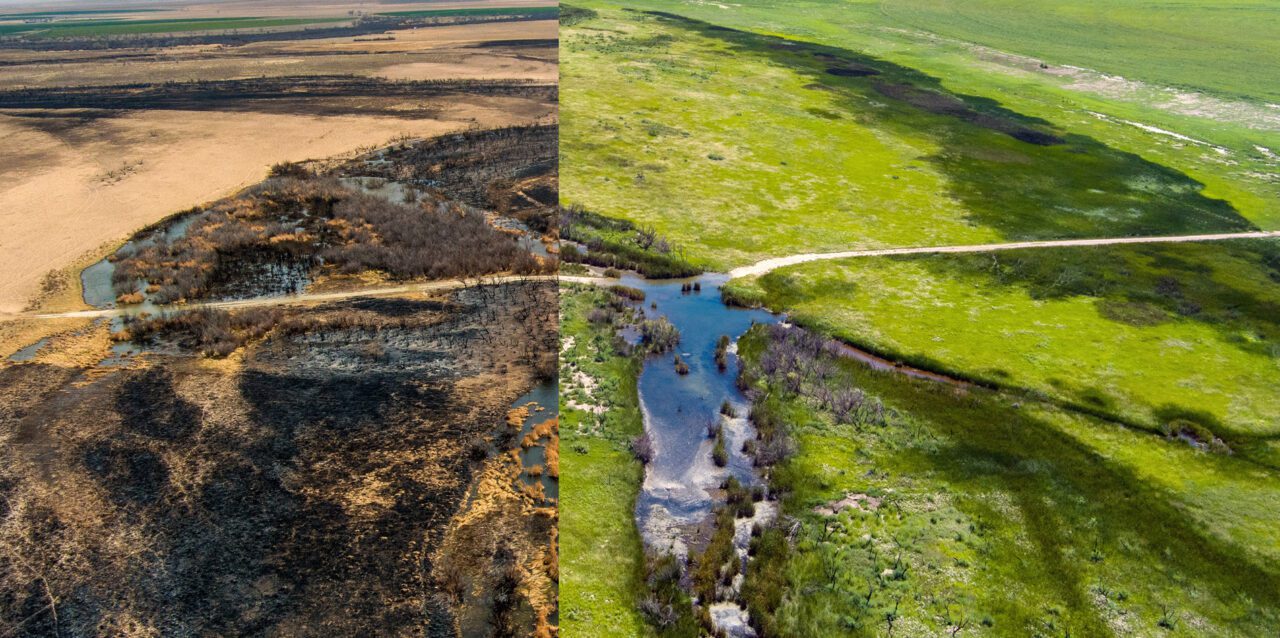
From the Summer 2023 issue of Living Bird magazine. Subscribe now.
The May family has a wildfire safety plan in place for their 15,000-acre natural-range ranch just north of the Arkansas River, on the southeastern plains of Colorado.
So when 60-mph winds whipped a wall of flames across the bone-dry ranchland in April of 2022, everyone knew the protocols meant human safety first. Circle the bulldozers and earth-moving machinery around the ranch house to cut firebreaks. Keep a clear path to the highway for family pickup trucks. Call in the ranch hands.
Consider the livestock next. With more than 9,000 acres of the ranch on fire and smoke blanketing the air, the Mays, their ranch hands, and a few good neighbors knocked down fences to provide escape routes for their 800 head of Limousin cattle.
On that fateful day when his land went ablaze, ranch patriarch Dallas May had other animals on his mind, too—all the other creatures great and small that he’d spent years cultivating on his shortgrass prairie, which was designed to be a wildlife sanctuary. By spring 2022, May Ranch had become a renowned refuge for Black Rails and Lesser Prairie-Chickens, extremely rare black-footed ferrets and Northern Pintail ducks, elk, and Golden Eagles.

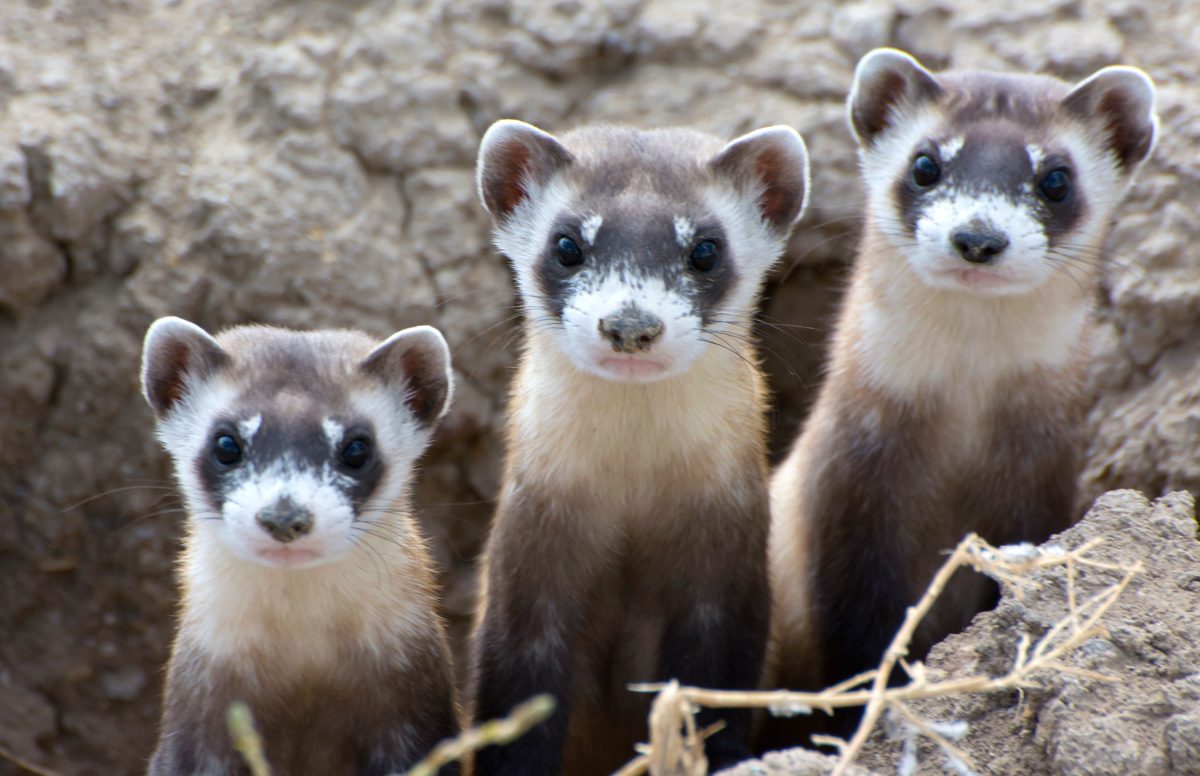
As the wildfire smoke cleared the next day, and Dallas May saw how the blaze had scorched even the richest wetlands, he despaired for what the 100-degree summer days would bring to the blackened prairie.
For years, the May family—Dallas along with his mother, brother, and sister, as well as his wife Brenda and their three children and six grandchildren—had invested in a different kind of cattle ranching. They teamed up with Ducks Unlimited, Audubon, the Denver Botanic Gardens, The Nature Conservancy, and federal and state wildlife agencies to push the sprawling ranch toward a future of sustainable agriculture on restored native habitat. As May recalls thinking, the partnerships and enthusiasm for making his ranch a sustainable operation had moved his mindset from feeling like it was “us against the world” to “discovering all the organizations and people who value the wildlife habitat here.”
Now the fire had turned most of his ranch into drifting sand resembling “the Sahara Desert,” May said, a few days after the fire. “It’s going to be a real test of our program. Whether the grass regenerates itself and we get back, or if we’re not sustainable.”
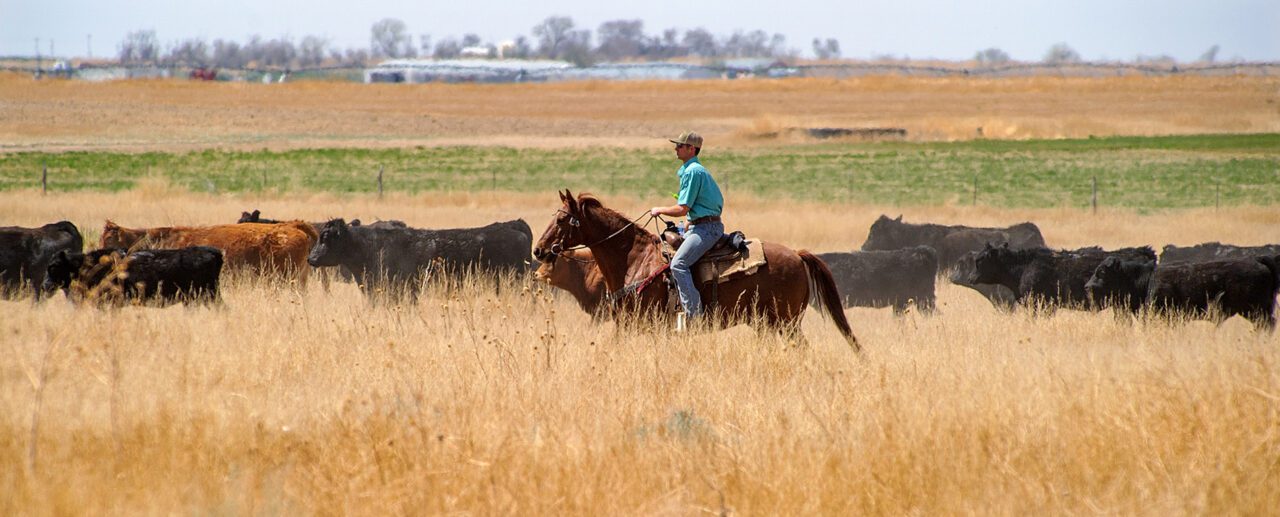
Before the Fire, a Wildlife Renaissance
Six years earlier, in May of 2016, Cornell Lab of Ornithology scientist Andrew Farnsworth was looking for birding spots along the Lower Arkansas River Valley when he happened on May Ranch.
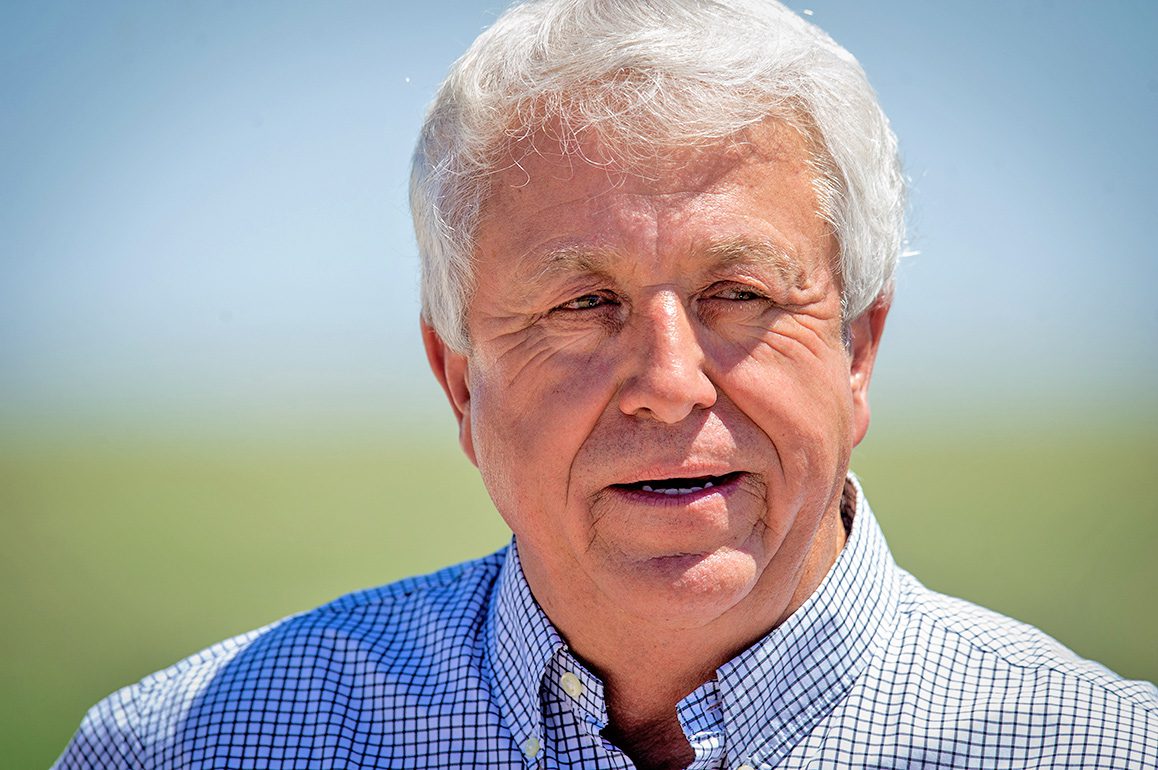
Farnsworth, a Cornell Lab senior research associate on the BirdCast project, was scouting for Team Sapsucker. That year, the team’s Big Day birding run—an annual one-day blitz to list lots of species and raise lots of money for bird conservation—was set in Colorado. And the shortgrass prairie grasses waving in the breeze just beyond the May family’s fenceposts promised a bonanza of hard-to-find grassland bird species that would be great gets for their Big Day count.
“There were just a whole lot of birds,” Farnsworth said. “We could see the pristine side of the ranch, and the side managed for more biodiversity, and it was just an eye-opener. We thought, ‘This would be a great spot.’”
Farnsworth set up a spotting scope on a dirt road, near a creek and dryland pasture, and scanned for Great Blue Herons and Burrowing Owls—while holding out hope for sounds that would confirm local reports of the elusive Black Rail. That’s when a pickup truck came angrily barreling down the road. Dallas May, an imposing rancher with the carriage of John Wayne, thought the spotting scopes were gun sights, and his cattle operation has little patience for poachers.
High emotions on both sides quickly transformed into a lucky birding tour. The suddenly cheerful, ruddy-faced May begged the birder to follow his pickup truck to his carefully tended wildlife ponds. Promising Big Day plans were back on.
When Farnsworth stepped out of the car at a May Ranch pond on Big Sandy Creek, he almost immediately heard the piercing chitter of the Black Rail. May and his family heard Black Rails all the time, but didn’t know how coveted they were by birders. The noisy but shy Black Rail—a species sometimes heard but rarely seen—wasn’t even on Team Sapsucker’s wish list for Colorado.
“There’s no way,” as Farnsworth put the initial probability of getting a Black Rail on their Big Day roll call. As it turned out, his chance encounter with an initially prickly rancher turned into dozens of birds that Team Sapsucker put on their list from the May Ranch on their record-setting birding run. Team total: 232 species, the state record for bird species listed in 24 hours in Colorado.
Dallas May wasn’t surprised about the birds to be found on his ranch. At the time, his family had been increasingly operating their working lands as a wildlife haven for four years. With pond restorations, meticulous grazing rotation, and a live-and-let-live attitude toward prairie dogs, the May family and their ranch hands had gotten accustomed to seeing Lesser Prairie-Chickens strutting through a pasture, Burrowing Owls taking over prairie dog dens, and Long-billed Curlews wading for crayfish.
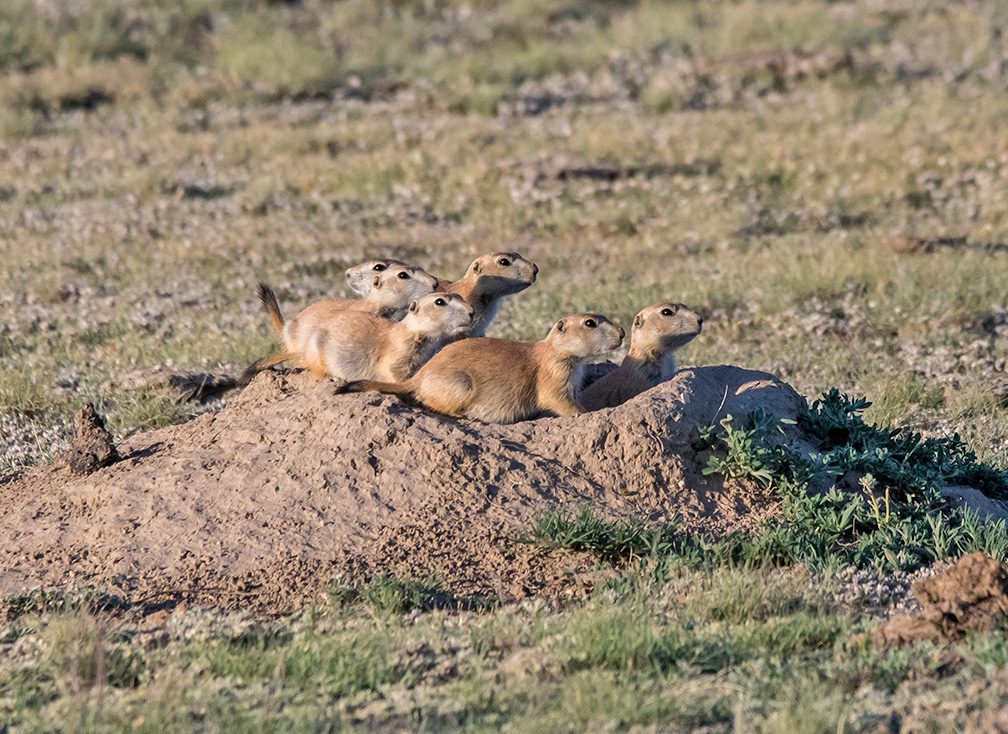
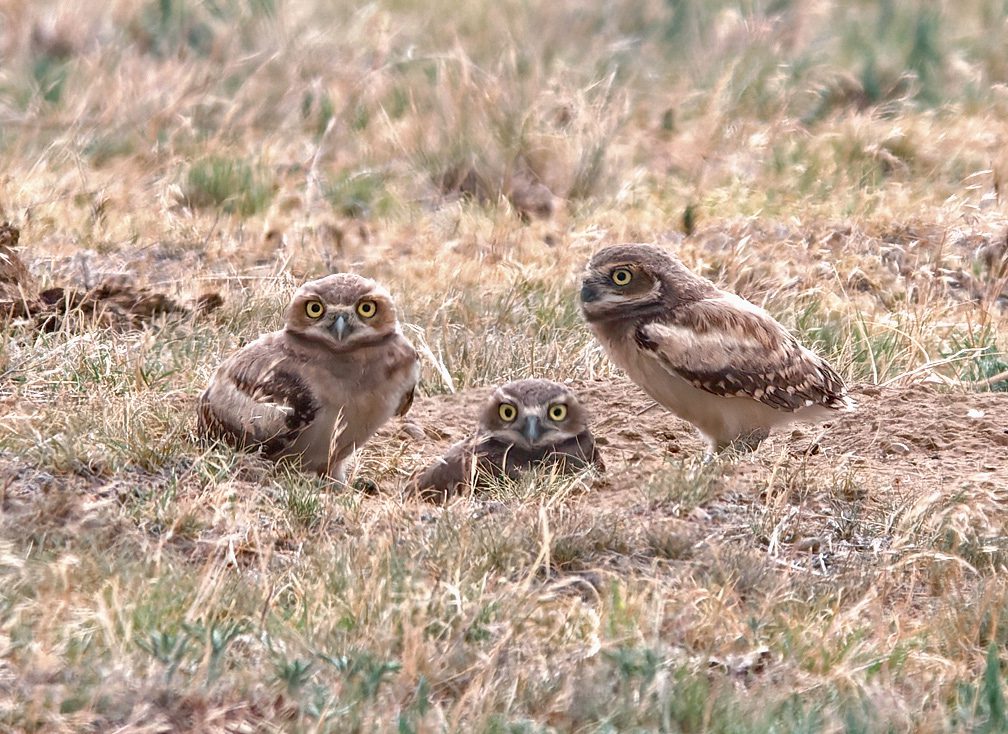
After decades shepherding their family’s cattle ranch through good times and bad, the Mays had a new plan for their drought-challenged, multi-generational ranch in the river valley: rewilding the pasture areas where his livestock grazed, and making money off more than raising a herd of beef.
The new model of sustainable grazing that May dove into requires piecing together all the available evidence that their environmentally progressive ranch produces added value. It’s an emerging way of ranching and farming, one that recognizes preservation of habitat amid global climate change can bring income and survival.
As May puts it, they run a biology lab as much as they run a ranch.
“It’s a different philosophy,” he said in late 2021, standing at his machinery shop near cages holding 15 federally endangered black-footed ferrets due to be released through a U.S. Fish and Wildlife Service program. The May Ranch is getting payments from nonprofit groups to host a post-reintroduction monitoring program. And the ferrets would eat the prairie dogs, making room for the Burrowing Owls that nest in prairie dog holes, and in turn adding to the marketing appeal of beef that comes from an Audubon-certified, bird-friendly ranch.
“We operate our ranch in a totally natural way,” May said. “We do our best. We’re an island of grass in a sea of developed farmland.”
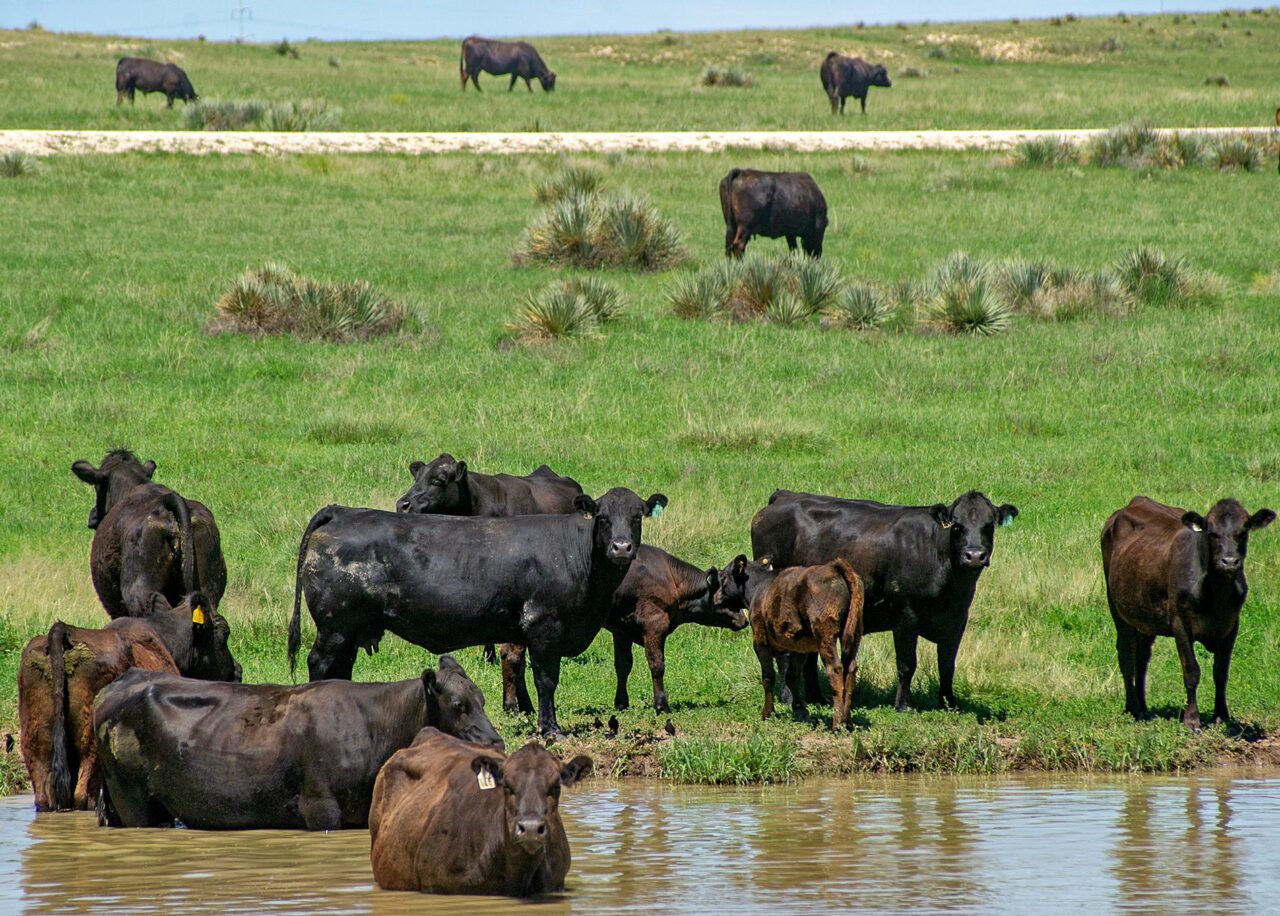
A Ranch Restored for Prairie, Grass-Fed Cattle, and Carbon
The transformation of the Mays’ ranching and farming property—which starts a few miles north of the town of Lamar and is cut by Big Sandy Creek as it drains toward the Arkansas River—began in earnest in about 2012. That’s when the Mays, who had leased property for grazing their high-quality Limousin beef for decades, bought the place.
Ranching and farming is a tight-margin business to begin with, but add in a big mortgage (rather than inherited land) and it becomes nearly impossible. The May family needed maximum profits off their land to make a go of it. Raising grass-fed beef—instead of sending cattle to an industrial-sized feedlot to fatten up on corn—would boost the top line by fetching a premium from buyers. Conservation measures that reduced costs—like switching from flood irrigation to drip irrigation for growing alfalfa and hay for feed—would increase the money that made it to the ranch’s bottom line. It didn’t hurt that the May family is raising a water-conscious variety of livestock in Limousin, which are historically adapted to dryland grazing and a perfect cattle breed for shortgrass prairie.
But by May’s calculations the ranch still needed more money on the top line, with family plans for the next generations—three May children and their growing brood of grandchildren—to take over someday. So the Mays got creative with stretching their marketing and income sources to the property’s fences.
In 2015, the May family signed a conservation easement, a contract in which a conservation group pays the rancher or landowner for giving up development rights and agreeing to keep the land as open space. As it turned out, the May Ranch adjoins a power substation and is blasted by the same hot sun and prairie gusts that power windmill farms and solar arrays across southeastern Colorado. Since they closed on the ranch purchase, the Mays had already fielded dozens of offers to lease the land for solar or wind power that could be cheaply plugged into the grid through the substation. But The Conservation Fund, a national land conservation organization dedicated to protecting environmentally valuable land, was willing to pay to make sure that never happened by purchasing a conservation easement on the ranch.
Next up, Dallas May invited biologists from the Audubon Rocky Mountains office to the family ranch. After Audubon Rockies Executive Director Alison Holloran made the drive from Fort Collins, she stepped out onto the shortgrass prairie, saw the extensive wetland habitat, and was astonished.
“Oh my goodness,” Holloran recalls telling May, “I promise you, you’ve got more secretive marsh birds on this ranch than anybody can imagine.”
The ranch was quickly added to the Audubon Conservation Ranching Initiative, which provides a certification as a bird-friendly place to raise beef. (The May Ranch was later designated as an Audubon State Important Bird Area.) Now the Mays can get a little extra bump on the price of their grass-fed cattle, and their beef can be featured on the menus of upscale restaurants in Denver’s burgeoning River North neighborhood.
To round out the cattle-ranching conservation trifecta, the Mays sold a contract on the value of what their prairie grazing pastures were nurturing underground. Buffalo grass, which alongside grama grass dominate shortgrass prairies, can run its roots as far as 6 feet underground, burying carbon all along the way.
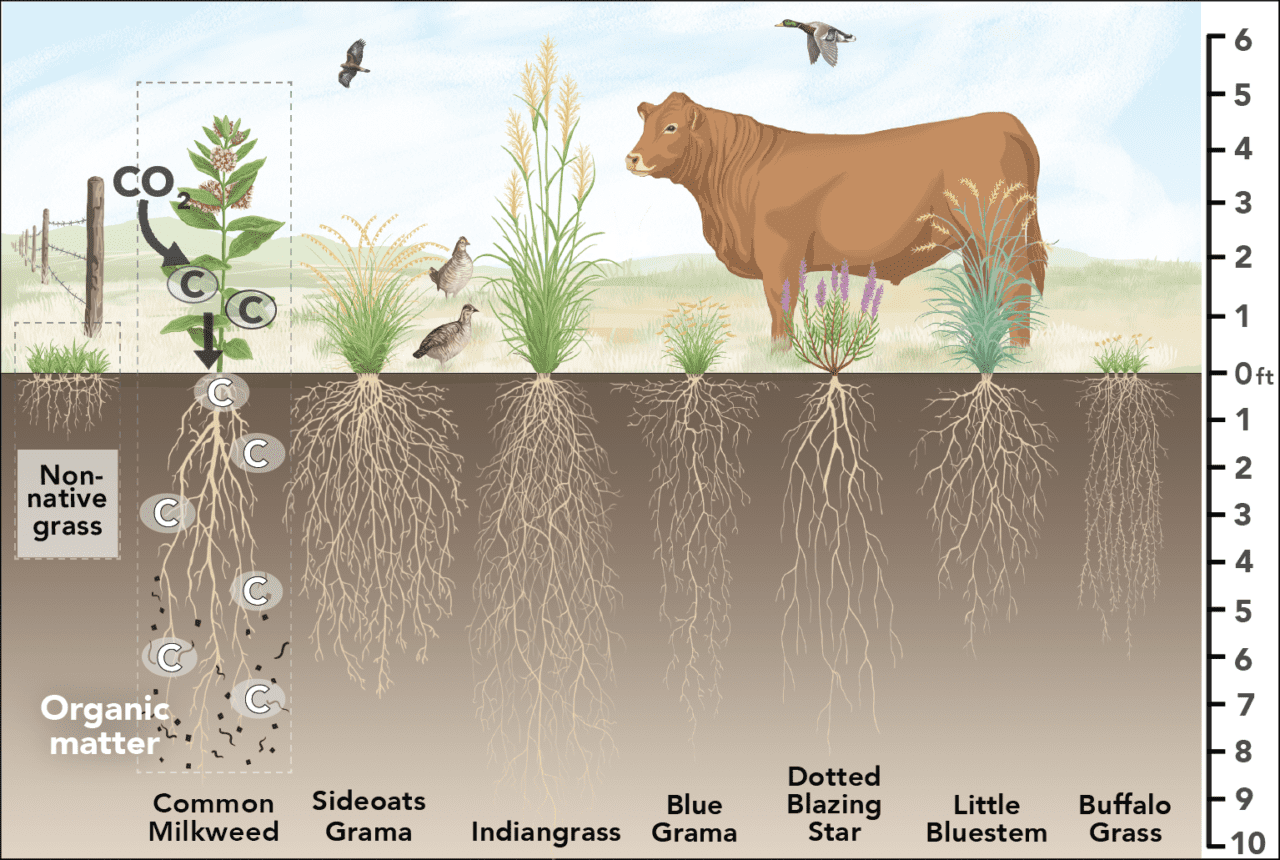
Ducks Unlimited, a conservation group traditionally associated with preserving wetlands for waterfowl, was willing to facilitate the drafting and sale of a carbon-credits contract for the May Ranch property through the DU Carbon Program. The program links up open-space property owners with corporations and donors who will buy carbon credits for grassland preservation. A 2014 sale of carbon credits to Chevrolet to offset fossil fuel impacts was a big launch for the program, touted as a game-changer by the Obama administration’s Department of Agriculture.
As for what Ducks Unlimited gets out of the deal, Billy Gascoigne—a grassland carbon retention and sequestration specialist and DU director of agriculture and strategic partnerships—says keeping the shortgrass prairie on the ground, instead of churned up for row crops, is important for preserving populations of pintails, wigeons, and teal on the western plains.
“What many people don’t realize is that waterfowl are grassland-nesting birds,” Gascoigne said.
The May Ranch, Gascoigne said, “is the last continuous piece of native prairie that still reaches the Arkansas River.” In other words, the 15,000 acres of shortgrass prairie are a carbon-sequestration gold mine that, with protection, will avoid the release of more than 200,000 tons of carbon dioxide emissions over the life of the project, according to a DU evaluation.
The carbon-credits revenue to the May Ranch reaches five figures annually, so “not a huge windfall,” Gascoigne said. “But it can be a steady income stream that didn’t exist five years ago.”
“We weren’t talking about carbon sequestration 10 years ago, but we’re talking about it now,” said Paul Evangelista, a Colorado State University research scientist in natural resources ecology and expert on modern natural ranching. “Not only because there is a potential economic gain from it, but it’s an important piece in maintaining the entire ecosystem. So we have this really wonderful shift in the thinking of some ranchers.”
More and more agriculture leaders are interested in working with researchers and conservation groups to demonstrate how land conservation and raising commercial animals can cohabitate, Evangelista said.
“I do actually think ranching may be more of a solution to the problem than the general public has made it out to be,” Evangelista said.
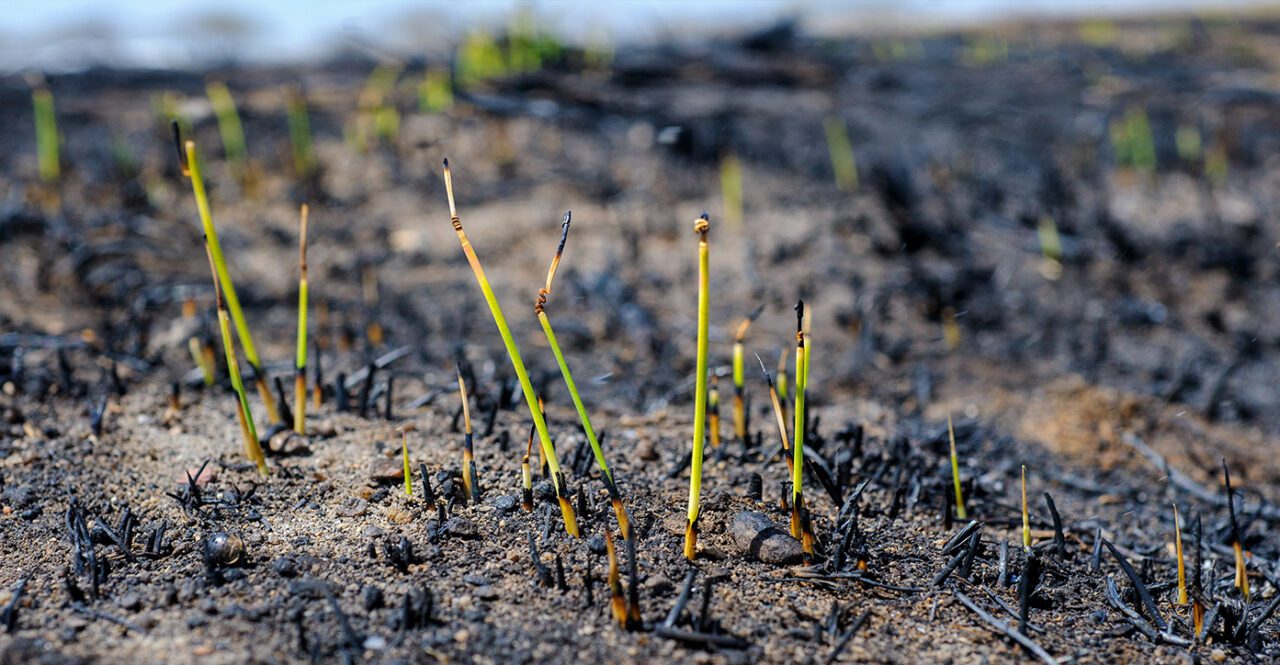
Awards and Rewards
In May 2021, the May Ranch was chosen for a Colorado Leopold Conservation Award, named after the Sand County Almanac author and naturalist Aldo Leopold. The award recognizes farmers and ranchers “who inspire others with their voluntary conservation efforts on private working lands.” The May Ranch was selected for achievements in improving wildlife habitat, soil conditions, water quality, and for restoring the overall ecological community. As an example, the awards committee pointed out the results of a Denver Botanic Gardens plant survey on the May Ranch, which found more than 90 native plant species not previously documented in Powers County.
Awards aside, the May Ranch is beginning to realize some of the rewards that will support this sustainable ranching model. While many western ranchers battle predatory coyotes on a regular basis, the Mays believe leaving prairie dogs alone and providing bird habitat gives coyotes plenty to eat besides young calves. The May Ranch has never shot, trapped, poisoned, or otherwise killed a coyote, May said, unless it was inadvertently hit by a car late at night.
“And in 45 years, as tens of thousands of calves have been born on this ranch, I can honestly say we’ve never lost a calf to predation,” he said.
Years of experience in grazing rotation and grass restoration have given the Mays a head start in meeting any new federal requirements that may come with the recent U.S. Fish and Wildlife Service designation of Lesser Prairie-Chickens as a threatened species in Colorado under the Endangered Species Act. Recently relocated members of another federally protected species, black-footed ferrets, spent their first winter on the ranch from 2021 into 2022. And the circle of ranch life was renewed in the spring with the first births of calves. As of April last year, the Mays were optimistic about their ecological and financial future.
“We’re playing the long game,” Dallas said. “The short game would be to go in and run as many cattle as we could and turn the resources into cash flow. That’s not sustainable. That’s not the kind of thing that’s going to keep you on the landscape.”
One new reality that the May family has accepted along the way is the constant scrutiny of certification auditors. Farmers have always complained they have self-appointed partners in the form of bankers. Now eco-friendly ranchers have teams of investigators poking around the ranch—the water-quality folks, the birds and biodiversity monitors, the easement assessors, the carbon sheriff.
Seeking the sanction of outsiders is now a necessary part of environmental ranching, said Dustin Downey, the manager of the conservation ranching program for Audubon Rockies. Downey is a cattle rancher himself, with his own herd grazing on grasslands within sight of Devil’s Tower. He said that if donors and consumers are going to put their money into beef labeled as bird-friendly, they want to know that the certifications and awards are based on observation and science.
“We want to hold ourselves to the highest standard possible when it comes to Audubon for our conservation-minded membership,” Downey said.
The May family spent decades and countless hours in the saddle or behind a tractor wheel, restoring grazing lands to shortgrass prairie and managing the land for children and grandchildren and great-grandchildren, on into perpetuity. But on that gusty, dry April day in 2022, Dallas May feared that the sturdy conservation-ranching framework his family’s future depended on was going up in smoke.
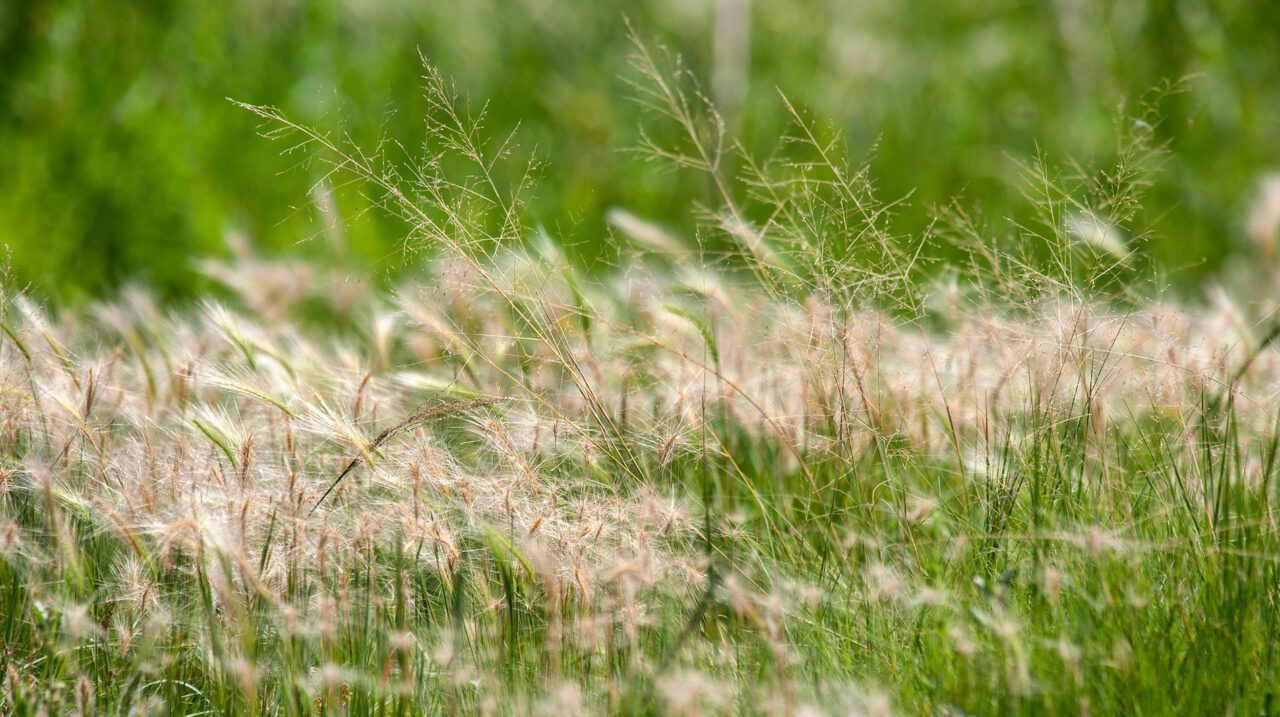
How Fast Can Burned Land Heal?
A mere four months after the fast-moving wildfire burned up nearly three-quarters of the May Ranch and turned it into a desert of blowing sand, the grass was back.
By the first day of August last year, thick, emerald-green grass stretched from the creek to the horizon at the spot where County Road LL dives under Big Sandy Creek, a table of green felt pinned down by blackened willow stumps.
Dragonflies crowded the airspace over the creek, executing lateral dashes in search of an in-flight meal. A healthy bloom of algae floated under masses of fresh bulrushes, a vital accent color to the recovering beaver ponds.
Dallas May took in the sights and sounds of healing land and spread his broad shoulders as wide as his grin.
“It’s all back,” he beamed.
Two lucky weeks of monsoon rains in July had pumped life back into May Ranch. The downpours had Dallas May mopping water off his kitchen floor due to roof damage, but he wasn’t unhappy about it—because the big plans for the future of the extended May family were back on.
“It’s been a good summer,” Dallas said, trading observations creekside with his son Riley.
“What the ranch desperately needed was rain,” he said, which seemed implausible given that the Rocky Mountain West is still in the grips of a 22-year historic megadrought. But, “we’ve gotten rain when we needed it.”
Maybe it’s karmic payback for all the good vibes that the May family had put into their land since they bought it.
Their purebred Limousin cattle were out on the pasture grazing a thriving alfalfa crop—eating into their winter foodstock, but still a welcome scene. The Black Rails and other birds that helped May Ranch earn its Audubon beef certification were nesting and breeding in recovering wetlands. The carbon-storage contracts the ranch sold have been adjusted to acknowledge all the carbon released by the wildfire, but those losses should be offset in the long run by rain-restored root growth that stuffs more carbon underground.
The Mays still worry about the portions of the ranch that tend toward the sandhill ecology. Drought had thinned out the grass cover in those areas, and the fire burned into roots in a way that will delay a comeback.
But in other areas, they see the payoff of their long game. Deeply rooted grasses like sacaton have come back quickly, giving cattle something to eat while other grasses with shorter roots take their time.
“The recovery process has vindicated our management, and the importance of biodiversity, having a multitude of species out there,” Dallas said. “They all react in different ways to those traumatic events.”
Having walked his cattle pastures for nearly half a century, Dallas May is practiced at the long game. The Limousin now grazing his property are descended from a heifer born in 1971 that was given to him by his grandfather. Looking across his pastures that tilt south toward the Arkansas River, May was thinking back even further to 1871, and before—before fences, before settlers riding burgeoning railroad systems wiped out most wildlife—to a time when bison walked the same land. Their hooves broke the hard soil and planted seeds; their grazing and defecating spread and fertilized grasses.
At its core, Dallas said, the May Ranch is a working model that proves landowners can help bring back that original prairie ecology—the prairie birds, the waterfowl, the burrowing animals, the deer, the raptors, and the ungulates, both wild and domestic.
“If the cattle are grazing the right way,” he said, “they are a benefit to the environment.”
Andrew Farnsworth, the Cornell Lab Big Day scout who stumbled into Dallas and his bird haven on the prairie, says the May Ranch operates on a timeless principle for how farmers and ranchers can think about wildlife and habitat.
“My land is important,” Farnsworth said in describing the May family ethic. “I want to use it in ways that I can survive, but also do the right thing.”
About the Author
Michael Booth is a reporter who covers the environment for the Colorado Sun, a journalist-owned, award-winning news outlet based in Denver.

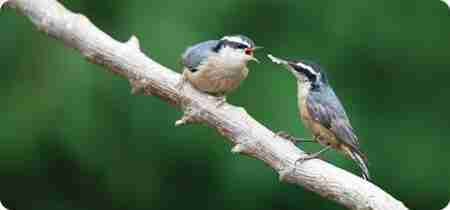

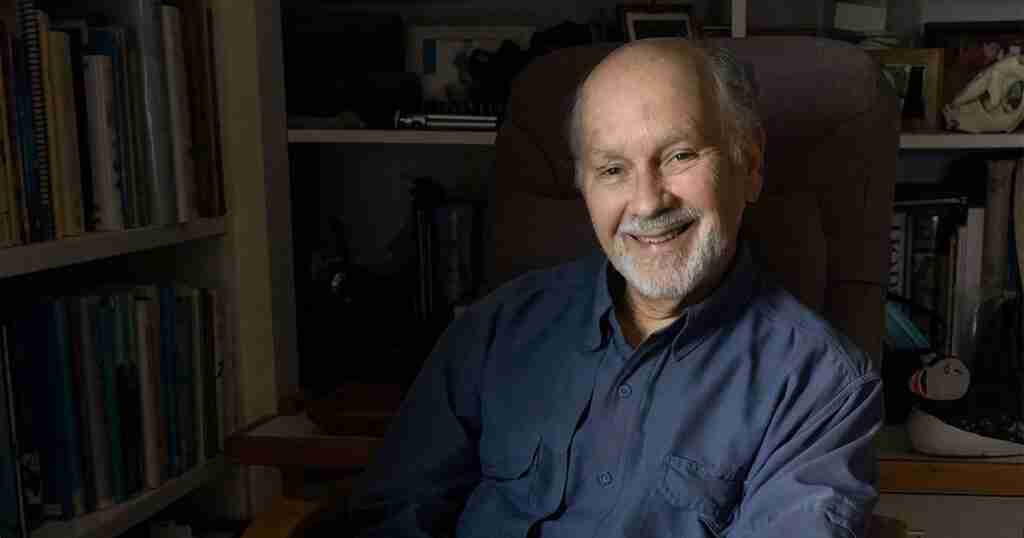
Hello there, just became alert to your blog through Google, and found that
it is really informative. I am gonna watch out for brussels.
I will be grateful if you continue this in future. Many people will
be benefited from your writing. Cheers!